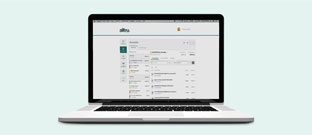Every couple deals with money in their own unique way. Although it may be a difficult conversation, comparing your spending with your partner’s may be a huge step forward in getting on the same financial page. This is especially true if you’re sharing household expenses, with each partner responsible for specific categories. Being on the same page is key to both partners being able to reach the same goals. So, here are some joint checking account tips on hopefully sparking that conversation so both of you can reach your full financial potential together.
Tracking Tools.
If you find keeping accurate track of what you spend challenging, a digital spending tracker might be helpful. Some are websites and some are apps, and they’re free, though some have add-on features designed to provide more options or make them easier to use. You can always track what you spend with online banking and checking your account history as well. Trying to reach a savings goal? We have a tool for that as well. Check it out!
Other apps to check out.
For some people, seeing how much they’re spending on clothing, food and entertainment on a monthly basis is enough to help them slow down the shopping. For others, seeing the dollar amount available for optional spending is all they need to curb their spending desires. And for some couples, the information is enough to make them realize they need to reduce large set costs, which might mean moving to a smaller apartment or leasing a less expensive car.
Fixing the Problems.
If it turns out that one of you, or both of you, are not following the spending plan you agreed on, what’s next? Chances are it means you’re spending more than you had intended to on certain types of expenses. The best first step is to rethink the amounts you’ve allocated to various categories. For example, if transportation costs are higher than you planned, and there’s no feasible way to reduce them, can you agree to cut back what you’re spending on something else? Maybe eliminate a subscription package or an upcoming trip or event you planned on attending.
Partner Passwords.
You’ve been warned repeatedly never to share your account passwords, but that rule doesn’t apply with your partner. Each of you must have access to your joint online bank and investment accounts, digital spending trackers, and any other financial apps you and your partner use in managing your money. That doesn’t mean you’re giving up your privacy. But it is one place where there can’t be any secrets. Honesty with both your partner and yourself with spending will help you in the long run.
It’s tough enough keeping track of your own expenses, let alone someone else’s now. So, you shouldn’t be surprised that managing money as a team effort can test your patience, especially if your partner has a different method of keeping financial records—or worse, no method at all. In some ways it’s easier for you today than it was for your parents or grandparents, who could keep track of how much they had in their checking accounts only by balancing their checkbook, which meant writing down every deposit and withdrawal, adding and subtracting along the way. Ah, the good ole days! These days finding out your balance is as easy as logging into your phone or computer.
Start implementing these joint checking account tips, and see what works best for you!
Stay Well,

Chelsea Springli






